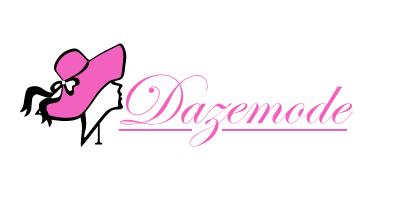Introduction: A Vibrant Market in Antigua
It was a sunny morning in Antigua, Guatemala, and the vibrant colors of the local market created a kaleidoscope of sights and sounds. Among the bustling crowd, Maria stood out with her traditional huipil, a beautifully embroidered blouse reflecting the rich heritage of her Mayan ancestors. Her radiant smile and warm demeanor epitomized the charm of the Guatemalan people. As I wandered through the market, interacting with vendors and locals, I realized that Guatemalans’ diverse looks and features tell the story of a complex and fascinating cultural tapestry. What do guatemalans look like
The Diversity of Guatemalan Appearance
Guatemala is a country of rich cultural diversity, reflected in its people’s physical appearance. The population is composed primarily of two main groups: the indigenous Maya and the mestizos (Ladinos), who are of mixed indigenous and European descent. This mix results in many physical features, making it difficult to pinpoint a singular “look” for Guatemalans.
Indigenous Maya: A Rich Heritage
The Maya people constitute approximately 42% of the Guatemalan population, according to the Instituto Nacional de Estadística (INE). The Mayans are known for their distinct features, including darker skin tones, straight black hair, and prominent cheekbones. They often have almond-shaped eyes and shorter, more robust physiques, adapted over centuries to the rugged highlands where many reside.
The Maya culture is incredibly diverse, with 21 distinct Maya ethnic groups in Guatemala, each with its language and customs. This diversity is also reflected in their traditional clothing, which varies significantly from one region to another. The intricately woven huipiles (blouses) and Cortes (skirts) are not just garments but expressions of identity, with patterns and colors indicating the wearer’s community and social status.
Mestizos: A Blend of Cultures
Mestizos, or Ladinos, comprise about 56% of the Guatemalan population. This group emerged from the blending of indigenous Maya with Spanish colonizers. As a result, mestizos often have a mixture of indigenous and European features. They typically have lighter skin tones than the Maya, and their hair color can range from dark brown to black, with varying textures. Eye color among mestizos is generally brown, but lighter shades can also be found.
Ladino culture is a fusion of indigenous and European influences, evident in their language, predominantly Spanish, and their customs and traditions. Ladino women might wear Western-style clothing, but many still incorporate traditional elements, especially during festivals and special occasions.
Garifuna and Afro-Guatemalan Communities
In addition to the Maya and mestizos, there are smaller populations of Garifuna and Afro-Guatemalans. The Garifuna people, who live primarily along the Caribbean coast, are descendants of enslaved Africans and indigenous Carib and Arawak people. They make up about 1% of the population. The Garifuna have darker skin tones, curly hair, and African facial features. Their vibrant culture is celebrated through music, dance, and unique culinary traditions.
Although a smaller group, Afro-Guatemalans also contribute to the country’s diversity. They are mainly found in coastal areas and urban centers. Their physical appearance includes dark skin tones, and they share cultural similarities with the Garifuna, including a strong sense of community and a rich musical heritage.
Statistics and Demographics
Understanding the demographics of Guatemala provides a clearer picture of its diverse population. According to the most recent census by the INE, the ethnic composition of Guatemala is approximately:
- Maya: 42%
- Mestizo (Ladino): 56%
- Garifuna: 1%
- Afro-Guatemalan: Less than 1%
- Other ethnic groups, including non-Maya indigenous people, comprise the remaining percentage.
Numerous indigenous languages further complicate this ethnic diversity. Guatemala recognizes 23 official languages, including Spanish and 22 Mayan languages. This linguistic diversity is a testament to the country’s deep-rooted cultural heritage.
Cultural Significance of Appearance
In Guatemala, physical appearance is closely tied to cultural identity. Traditional clothing, hairstyles, and even body art can signify a person’s heritage and social status. For instance, the elaborate headdresses worn by some Maya women are not just decorative but carry historical and cultural significance, often indicating marital status or community leadership.
Similarly, the Garifuna use colorful headscarves and traditional garments to celebrate their African heritage. These cultural markers are essential for preserving the unique identities of Guatemala’s diverse communities in the face of globalization and modernization.
Conclusion: Embracing Diversity
Guatemala’s people are a living mosaic of cultures, histories, and traditions. From the highlands of the Maya to the coastal Garifuna communities, each group contributes to the rich tapestry of Guatemalan society. Understanding what Guatemalans look like goes beyond mere physical traits; it involves appreciating the cultural and historical contexts that shape their identities.
As I left the market in Antigua, carrying with me a beautifully woven huipil as a souvenir, I felt a deep appreciation for the diverse beauty of the Guatemalan people. Their faces, marked by centuries of history and a blend of cultures, tell stories of resilience, pride, and an enduring connection to their roots. In a world that often seeks to homogenize, Guatemala stands as a vibrant example of the strength found in diversity.
